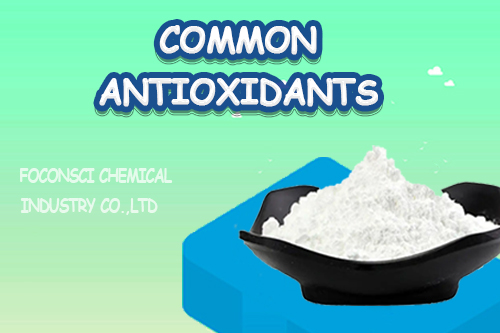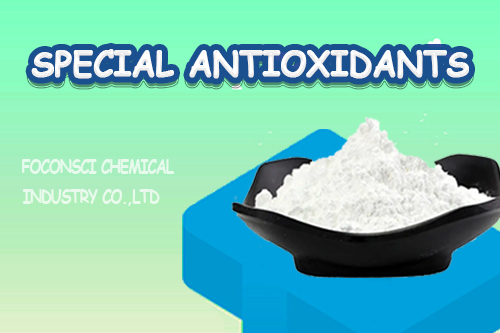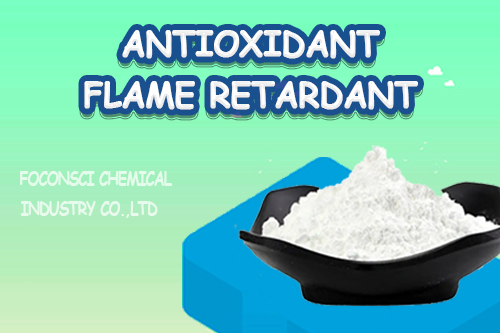Antioxidant Series: Key Players in Enhancing Material Stability
|
In modern chemistry and material science, antioxidants play a crucial role by inhibiting or slowing down oxidation reactions, thereby extending the lifespan and enhancing the stability of products. Below is an introduction to various common antioxidants and their applications in different fields. Common Antioxidants and Their Applications
Antioxidant 1010 (CAS 6683-19-8) and Antioxidant 1076 (CAS 2082-79-3) are classic phenolic antioxidants widely used in plastics, rubber, and coatings industries. These antioxidants effectively inhibit thermal oxidation degradation, thereby improving the durability and stability of materials. They are often used in combination to enhance antioxidant effects, especially under high-temperature processing conditions.
Antioxidant 168 (CAS 31570-04-4) is a phosphite antioxidant commonly used in conjunction with phenolic antioxidants like Antioxidant 1010. This combination provides a synergistic effect, effectively inhibiting the formation of peroxides during heat treatment, thus enhancing the heat resistance and antioxidant capabilities of the material.
Antioxidant DLTDP (CAS 123-28-4) and Antioxidant DSTDP (CAS 693-36-7) are thioester antioxidants primarily used in plastics and rubber products. These antioxidants capture free radicals, preventing material aging and degradation. They are often combined with phenolic antioxidants to further improve product durability.
Antioxidant 1098 (CAS 23128-74-7) is particularly suited for engineering plastics like nylon and polyester. It exhibits excellent antioxidant performance at high temperatures, significantly extending the lifespan of materials.
Antioxidant 1135 (CAS 125643-61-0) is commonly used in polyurethane and polyether. Its outstanding resistance to thermal oxidation and hydrolysis makes it a popular choice in the production and application of these materials.
Antioxidant 264 (CAS 128-37-0) also known as BHT, is a widely used antioxidant, especially in food packaging and cosmetics. It inhibits lipid oxidation, preventing product spoilage and extending shelf life.
Antioxidant Dpp (CAS 4712-55-4) and Antioxidant Tpp (CAS 101-02-0) are phosphite antioxidants used primarily to stabilize plastics and coatings. These antioxidants react with peroxides, preventing material degradation, and are particularly effective under high-temperature and light exposure conditions.
Antioxidant TNP (CAS 26523-78-4) is an antioxidant used in polymer systems that effectively inhibits oxidative degradation in high-molecular-weight materials. Its unique molecular structure allows it to perform well under thermal oxidation and photodegradation conditions. Special Antioxidants and Their Versatility
3-Hydroxyphenylphosphinyl-propanoic acid (CAS 14657-64-8) is a new type of antioxidant that exhibits excellent performance in thermal and oxidative stability, especially in the stabilization of polyester and polyurethane materials. This antioxidant demonstrates remarkable stability under high-temperature conditions, effectively extending the lifespan of materials.
Bisphenol-A bis(diphenyl phosphate) (CAS 5945-33-5) is a bisphenol-A type antioxidant commonly used in the production of flame-retardant plastics. It not only provides antioxidant protection but also enhances the flame-retardant properties of materials, making it widely used in electronic and electrical equipment. Flame Retardants with Antioxidant Functions
TCPP (CAS 13674-84-5) and DODPE (CAS 84852-53-9) are common flame retardants that also possess some antioxidant properties. TCPP is primarily used in the production of polyurethane foam, while DODPE is commonly used in engineering plastics, particularly in applications requiring both flame retardant and antioxidant properties.
HBBCD (CAS 3194-55-6) and TBBPA (CAS 79-94-7) are halogenated flame retardants with antioxidant functions. They play an essential role in the production of plastics and electronic products, ensuring the stability of materials under high-temperature and oxidative conditions. ConclusionIn the chemical industry, antioxidants play an indispensable role. Different types of antioxidants, through synergistic effects, significantly enhance the stability and durability of materials. Whether it’s common phenolic antioxidants or new phosphite antioxidants, they provide robust support for various industrial applications. By choosing and using antioxidants wisely, companies can better extend product life and improve market competitiveness. Contact us
|
|
 |


 EN
EN
 AR
AR
 BG
BG
 HR
HR
 CS
CS
 DA
DA
 NL
NL
 FI
FI
 FR
FR
 DE
DE
 EL
EL
 HI
HI
 IT
IT
 JA
JA
 KO
KO
 NO
NO
 PL
PL
 PT
PT
 RO
RO
 RU
RU
 ES
ES
 SV
SV
 TL
TL
 IW
IW
 ID
ID
 LV
LV
 LT
LT
 SR
SR
 SK
SK
 VI
VI
 HU
HU
 TH
TH
 TR
TR
 GA
GA
 CY
CY
 KA
KA
 LA
LA
 MN
MN
 KK
KK
 LB
LB





